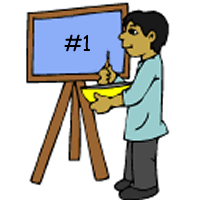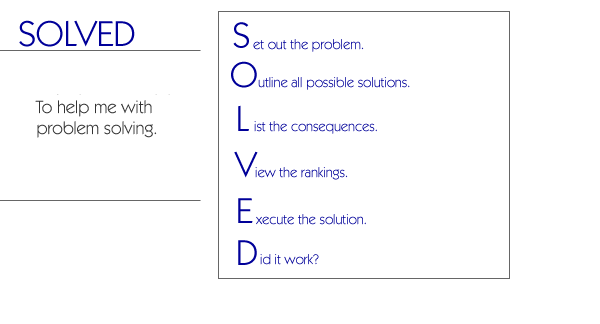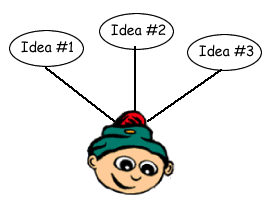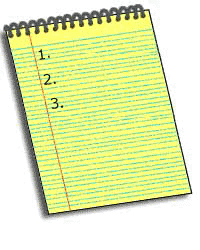S
et out the problem.
- Identify the problem to be solved.
- Say it in your own words. Then write
it down so you are sure that you understand it.
- For example, if the problem is how
to solve the gasoline crisis, write:
"What are all the ways that
the gasoline shortage can be solved?"
|

|
O
utline all possible solutions.
- Brainstorm all the ways that the problem might
be solved.
- Don't reject any solutions at this step.
- Construct a graphic organizer with the problem
written in the circle in the center and all the possible solutions
written in circles coming out of the center circle.
- For example, for the gasoline shortage,
the following solutions might be projected:
- Conservation.
- Alternate fuels.
- Electric cars.
- Unlimited exploration of oil in the US.
- Unlimited exploration of oil in the world.
- More fuel efficient cars.
- More public transportation.
|
|
L
ist all the consequences of each of the solutions that was outlined.
- Think of what will be the likely effects of
each solution. Think of the solution as a cause and the consequences
as effects.
- Create a graphic organizer for each solution
where the solution is written in the center circle and the consequences
are written in circles that project from the center circle.
- For example, for the consequence of unlimited
exploration of gasoline in the US, the following consequences
might be projected.
- Might result in ecological problems.
- There might not be limitless reserves of
gasoline.
|
|
V
iew the rankings.
- On the basis of the consequences you projected
for each possible solution, rank the solutions in terms of what
will work with the least amount of negative consequences.
- View the rankings and select the highest ranked
solution (or solutions) as the choice to be put into action.
There may not be one best solution.
- For the example above, you might rank
the possible solutions in the following order based on the ease
with which they could be put into effect and the least resistance
from the public.
1. More fuel efficient cars.
2. More public transportation.
3. Conservation.
4. Alternate fuels.
5. Electric cars.
6. Unlimited oil exploration in the US.
7. Unlimited oil exploration in the world.
|
|
E
xecute the solution.
- The highest ranked solution (or solutions) should be put into
action. Think of all the things that would have to be done to
make the solution work. Make a list of these.
- To execute the above example, the list of actions that would
have to be taken might include: getting the car manufacturers
to increase fuel efficiency, getting governments to allocate
more money for public transportation, getting the public to
change its opinion toward use of public transportation, etc.
|
 |
D id
it work?
- If you put the solution into action, evaluate
it to see if it worked. If it did not, go back and view the
other possible solutions and consider which should be tried.
- If it is not possible to put the solution
into action, as in the previous example, list questions that
need to be answered to determine if the solutions worked. For
example, you might ask:
- Do people use more public transportation
if more options are provided?
- Would auto manufacturers willingly increase
fuel efficiency?
- Who would pay for production of alternate
forms of fuel?
- In some cases, you will need to go back and
start the problem solving process again to search for the best
solutions to the problem.
|
???
|







